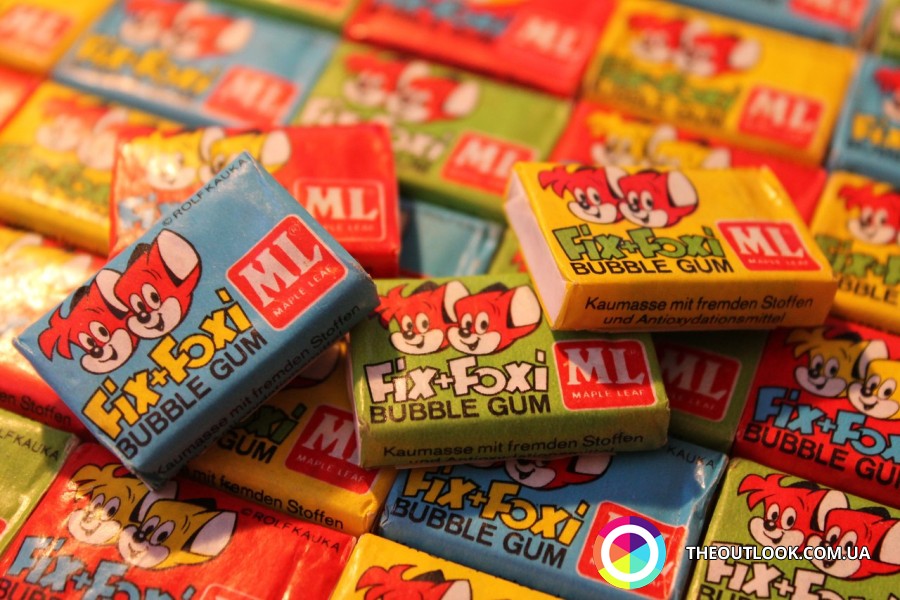Peace, friends, gum!

It is worth mentioning off hand that despite the license, Semple earned hardly anything. How come, you might ask? It is just nobody took the risk of applying the technology he believed to be the only correct one. The dentist suggested making chewing gum, as it was mentioned above, of elastic rubber and chalk. The idea surely had its upside. Such a product could have remained in use for a couple of months. Isn’t it an economic miracle? Still, there turned out to be no demand for such a long-lasting chewing gum.
Nevertheless, as far back as in late 19th century whole gum-making enterprises were launched. Some remained afloat longer, others were shut down almost immediately. The case remained the same till 1892 when an unheard-of soap seller William Wrigley started producing goods called Wrigley's Spearmint and Wrigley's Juicy Fruit. There is no need to explain what a breakthrough it was. It is this gum that people all over the world still chew.
Another remarkable event in these terms occurred in 1928. Chemist Walter E. Diemer created another king of gum – bubble gum. From now on one could blow bubbles out of it! The invention’s popularity shoot up in a zip for not only it could help adults deal with breath odor, it also amazed children. And they started gamboling, blowing and popping bubbles of different sizes. By the way, American woman Susan Montgomery managed to blow the most significant bubble. It was 58.5 cm in diameter.

Soon the gum won hearts around the globe. Before World War II mostly the USA population chewed gum. But after American soldiers started treating with it habitants of all countries where they militated, bubble gum became truly world-popular. Almost immediately own factories for the good’s production emerged in Japan, Germany and France. Sure enough, it reached the Soviet Union.
This is when the story of the chewing gum full of nothing but fun and joy ends abruptly. It is hard to believe, but a terrible tragedy is connected with it in USSR. As it has already been mentioned, having conquered the world, chewing gum started winning Union Republics. The only thing is that it couldn’t be obtained except for from foreigners. People from all over the world, when going to Moscow or Kiev, were taking along pocketfuls of gum that could be gainfully sold or given as a present.
That’s what things were in 1975 when friendly hockey match Soviet juniors versus Canadian team “Barry Cup” took place in Moscow in Sports Palace. During the game and in the breaks foreign fans threw gum to where soviet citizens sat. The latter, obviously, ravened to grab some gum thus amusing guests from over the ocean who were taking pictures of such insanity. Everyone was having fun. But after the game, when fans were walking along the corridors, a crowd of our guys rushed to Canadians, who were going to be taken away by buses, hoping to get some more precious gum. By accident lights went off at that moment. Awful panic turned to congestion in a blink. As a result, 21 persons died, more than a half of them – kids…
As soon as in a couple of years production of own chewing gum began in USSR. It cost 50 kopecks for 5 sticks. It came in a number of variations: with mint, orange, strawberry and even coffee flavor. The word is it caused high pressure and headaches among soviet kids. Gums from Baltic countries and Erevan, that emerged later, were believed to be of better quality. They were aimed for export but still couldn’t hold a candle to western analogs. Therefore soviet kids kept attacking foreign citizens: “Mister, give me some gum!” Who could have thought that the saying “Peace, friends, gum” originated in those times.

Today excitement for chewing gum is abated for it can be bought in every shop and at every stand. Truth be told, scientists keep arguing about its health utility. However, it has almost no impact on the popularity of the gum.
In conclusion here are some more facts about or today’s lead character.
 Annually habitants of the USA spend over 2 billion Dollars on chewing gum with one American consuming about 300 sticks of it.
Annually habitants of the USA spend over 2 billion Dollars on chewing gum with one American consuming about 300 sticks of it.
 There is a special person at New York railway station who is in charge of tearing hardened gums off walls and other surfaces. His average daily “harvest” constitutes about 3 kg.
There is a special person at New York railway station who is in charge of tearing hardened gums off walls and other surfaces. His average daily “harvest” constitutes about 3 kg.
 However, in San Luis Obispo city of California there are certain troubles with dealing with such mess effectively. Therefore memorial Chewing Gum Alley was created. Anyone willing can glue his or her chewing gum to the wall of the house situated there. Many tourists know the place.
However, in San Luis Obispo city of California there are certain troubles with dealing with such mess effectively. Therefore memorial Chewing Gum Alley was created. Anyone willing can glue his or her chewing gum to the wall of the house situated there. Many tourists know the place.

 Italian designer Maurizio Savini is notorious for his sculptures made of gum.
Italian designer Maurizio Savini is notorious for his sculptures made of gum.
 American director David Lynch is famous not only for his odd movies but also for his collection of used bubble gums. Filmmaker believes that such gums look like human brain.
American director David Lynch is famous not only for his odd movies but also for his collection of used bubble gums. Filmmaker believes that such gums look like human brain.
Photo from open sources





















